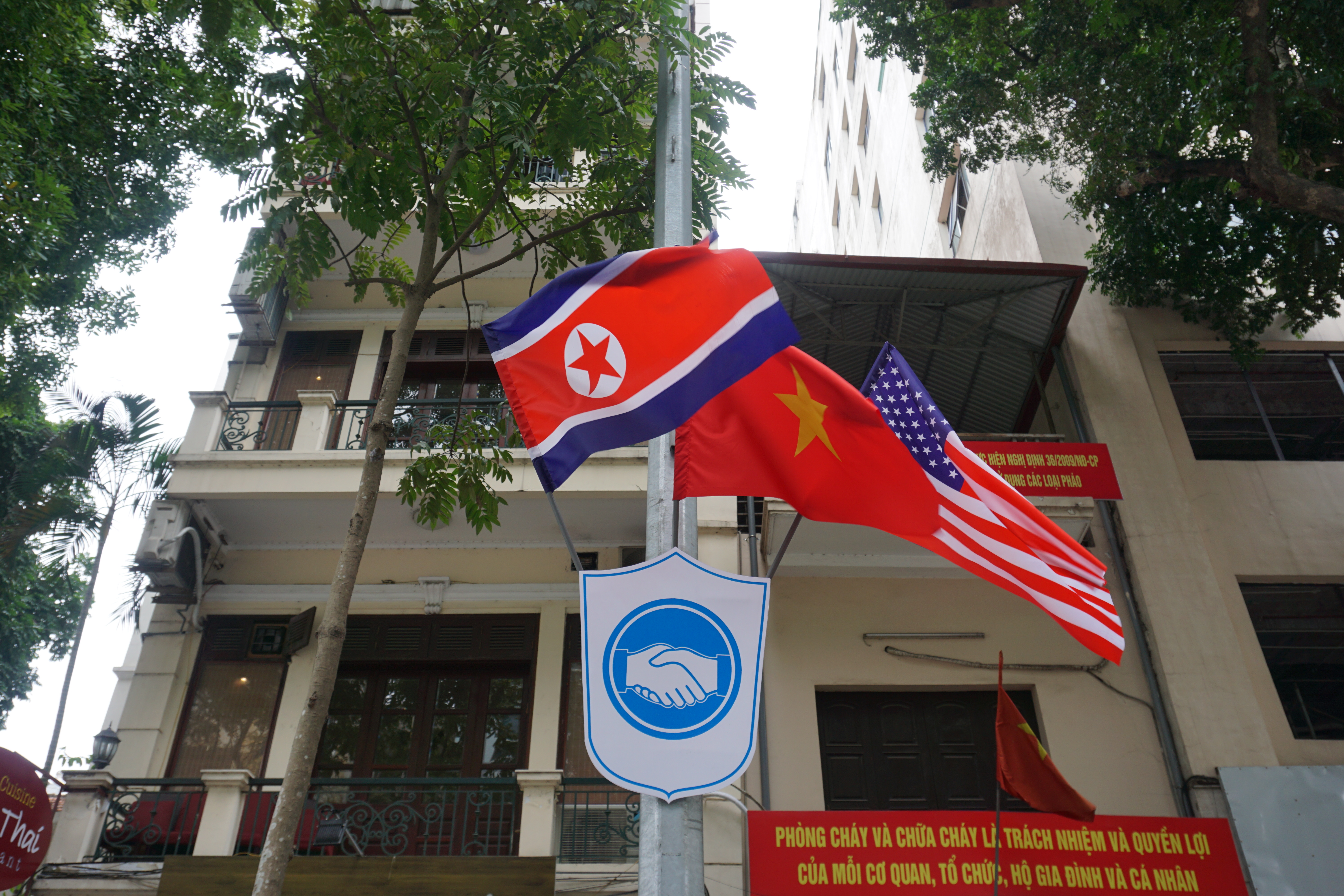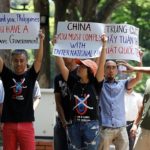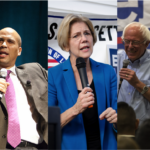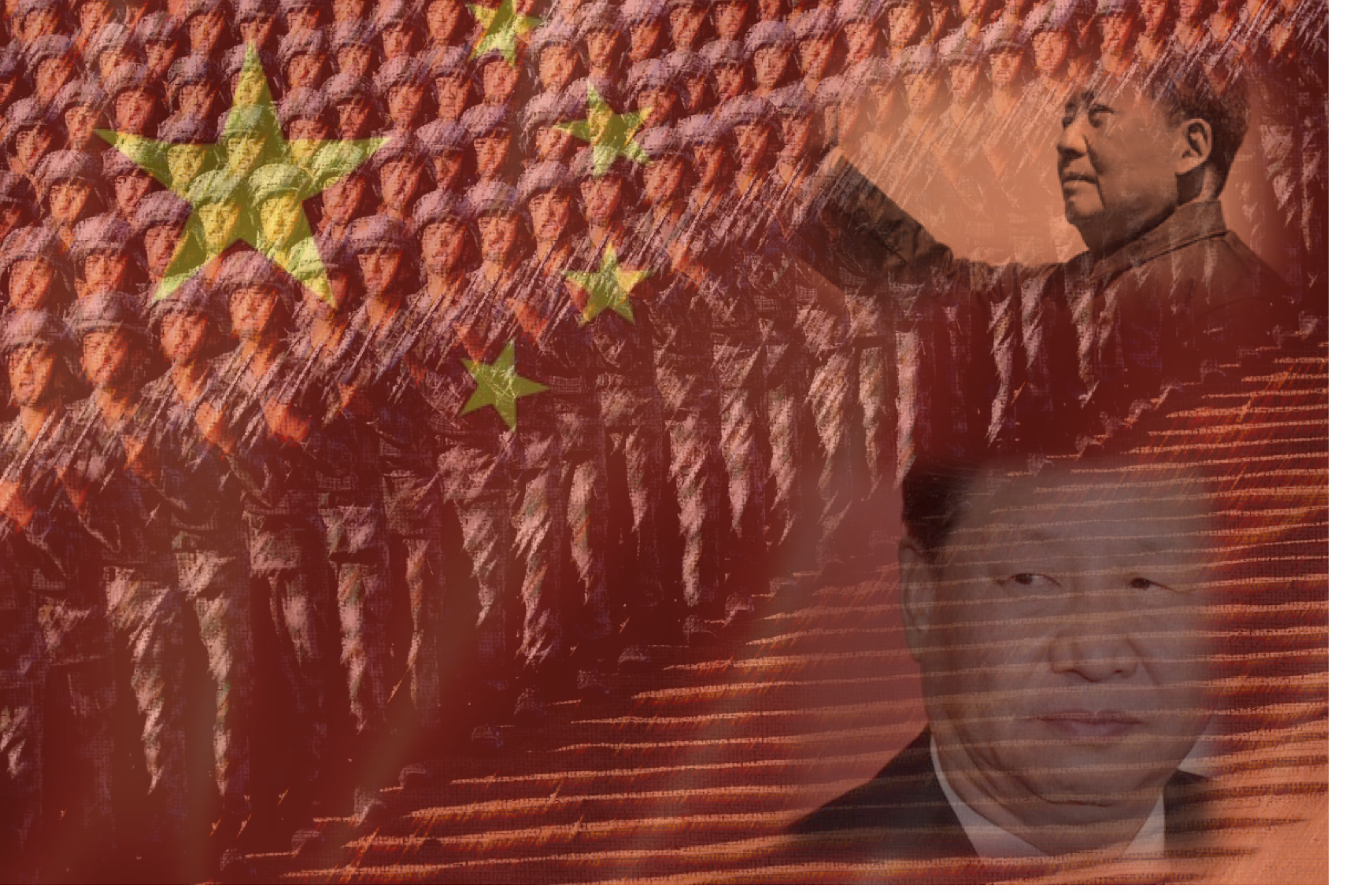President Trump’s approach has produced progress in US-North Korea relations. In order to go further after the Hanoi Summit, he may need to change it.
In a Hanoi barbershop, locks of blonde and black hair tumbled to the floor, where they were mixed together and swept up by the same broom. Two men and camera crews admired haircuts the whole world knows: one a carefully blow-dried blonde quaff, the other a jet-black brush cut with sides so low a straight razor was called in for the job.
Neither of these men was US President Donald Trump or North Korean leader Kim Jong-un; just two Vietnamese swept up in the hype of their capital hosting a second summit between the two leaders meant to breathe new life into stalled denuclearization talks.
But their excitement turned out to be premature.
On February 28, after months of letter diplomacy and reports of the two leaders “falling in love,” Mr. Trump and his officials cut the Hanoi summit short before he and Mr. Kim could enjoy their fancy lunch or sign a deal ushering in a new era of US-North Korea relations.
Instead, after almost a year of Mr. Trump’s roller coaster diplomacy, he finds himself very much back where he started.

To Gia Huy, 9, and Le Phuc Hai, 66, pose after having their haircut in North Korean leader Kim Jong Un and US President Donald Trump styles in a haircut salon in Hanoi, Vietnam, February 19, 2019. Photo: Kham, Reuters.
Doomed to Fail
In a press conference following the summit’s collapse, Trump played the summit off as a failure by North Korea to offer up anything substantial enough to warrant sanctions relief. “It was about the sanctions. They wanted them all lifted,” he told reporters.
His claims were later rebuffed by analysts, along with North Korean officials who denied Mr. Trump’s claim that they wanted all sanctions lifted — they sought partial sanctions relief, focusing on five U.N. sanctions related to “the civilian economy and the livelihood of [their] people,” a foreign minister said.
As the dust settled in Hanoi, it became clear the disappointing ending may have had more to do with Mr. Trump suddenly adopting a hardline approach to a dictator he’d been famously soft on.
“I don’t think there’s any way Kim Jong-un would demand the entire sanction regime to be waived in exchange for Yongbyon,” said Nathaniel Kerkhoff, a Pacific Forum Young Scholar based in Seoul, referring to the nuclear facility that North Korea offered to destroy in exchange for sanctions relief from the US.
Listen: Young Pacific Scholar Nathaniel Kerkhoff discusses the Hanoi Summit on the NOVAsia Podcast
A week after the summit, on March 7, a senior US administration official asserted to reporters that sanctions would not be lifted until North Korea’s entire nuclear program was dismantled, including its missiles, chemical and biological weapons.
Officially, this has long been the US policy on North Korea. But publicly, Mr. Trump has painted a different picture as he told reporters he was in “no rush” to see North Korea denuclearize. A week before the summit, American broadcaster Public Broadcasting Service discussed how both sides appeared to be considering a “phased approach” to getting nuclear weapons out of North Korea, with each side taking simultaneous steps instead of going all in on one big deal.
It was likely a surprise to Mr. Kim that Mr. Trump was unwilling to make a tit-for-tat trade in order to show off his success at home. Many in the US feared Mr. Trump would give away too much in exchange for too little — that he was eager for a deal, any deal, with the regime he bragged of talking back from the brink of war.
Mr. Trump proved everyone wrong by doing something only slightly better: absolutely nothing. But while he may have saved face with North Korea hawks in his administration, Mr. Trump’s failure to strike a deal in Vietnam exposed a hole in his strategy: his belief that bravado and charm could close a yawning gap between the two countries’ goals and make up for an obvious lack of preparation.

President Donald J. Trump and Kim Jong Un, Chairman of the State Affairs Commission during the summit in Hanoi, Vietnam, February 27, 2019.
Credit Where Credit is Due
In truth, Mr. Trump’s barreling approach to the tedious business of arms control has brought some success. After watching his predecessors fail in their attempts to threaten, cajole, and pry North Korea away from its nuclear weapons program, Mr. Trump decided on a different approach: engaging in direct talks with the North Korean leader in his own backyard, traveling 8,000 miles for his second summit with Mr. Kim in hopes that his self-styled skills as a deal maker would bridge the gap.
This was a move former presidents shunned, and to some degree it has paid off for Mr. Trump. Through fawning and encouragement, he has managed to lure Mr. Kim out of his shell and into the open, where he may be less likely to lash out. But there are limits to what can be accomplished in bypassing the nitty-gritty details of arms control in exchange for a top-down approach, and Hanoi laid bare the flaws in the US approach.
“Remember: despite all the meetings and negotiations since the beginning of 2018, North Korea has not yet made a single meaningful step toward denuclearization,” said Ryu Yongwook, an Assistant Professor at Lee Kuan Yew School of Public Policy back in December. His words still ring true now. Even as negotiations were ongoing, North Korea was busy expanding its nuclear program.
Mr. Trump seemed content to ignore such claims, and brushed aside warnings from his own intelligence officials that Mr. Kim was unlikely to relinquish the nuclear arsenal his country has spent the better part of 40 years building.
Whether Mr. Trump finally came to his senses and took the advice of his intelligence community seriously, or whether he feared coming home with a bad deal after a damaging testimony from Michael D. Cohen, his former lawyer, will be hard to pinpoint. Whatever it was, Mr. Trump’s walking away from a deal in Hanoi garnered him praise at home from both sides of the aisle — a task Mr. Trump has shown almost no talent for in his first term as president.
The question is how his bold decision will be received in North Korea.
Check, Not Checkmate
Mr. Kim could already be responding to the summit failure by gearing up for another missile test. Satellite imagery examined last week examined by the Beyond Parallel program at the Center for Strategic and International Studies shows activities at Sohae Satellite Launching Station that are consistent with “preparations for the delivery of a rocket.”
Seeing that talks would only get him so far with Mr. Trump, perhaps Mr. Kim has decided on a return to brinkmanship as a better way to convince the US to loosen sanctions now strangling the North Korean economy and keeping the young ruler from fulfilling his pledge to bring wealth into the impoverished country.
But the US has only bolstered its sanctions enforcement since the summit, coming down on two Chinese shipping companies that have allegedly helped Pyongyang skirt sanctions imposed by the US and the United Nations Security Council.
Activity at Sohae could be what one analyst and former diplomat in Seoul called a “red herring.” A former South Korean diplomat who worked on North Korea issues insisted that a missile test at this point would likely emphasize a test of re-entry technology — the missing link in North Korea’s nuclear missile program — and could incite a US response more dramatic than we’ve seen in decades.
Mr. Kim may be cornered at this point, according to the former diplomat. After pledging not to test anymore rockets, he risks upsetting more than just Mr. Trump by reneging on that promise. A preoccupied Chinese President Xi Jinping, Mr. Kim’s only real ally, is laboring to bring an end to the US-China trade war, and may have little patience for another round of provocative North Korean missile tests.
Locked in his promise not to test, and without any new concessions from the US, Mr. Kim may be in a place where Mr. Trump can contain him.
At first all this might sound like a good thing for the current US administration. Mr. Trump, in walking away from a bad deal, proved himself a more apt negotiator than critics imagined. But even after an apparent victory for the US — or at least a non-loss — it’s now clear how little actual progress Mr. Trump has made. North Korea is still producing nuclear material, and sanctions are still strangling the nation’s economic progress. The only thing separating today from a decade ago is a moratorium on missile testing — and after the activities at Sohae, even that may be gone before long. For all the media attention these high-profile meetings have garnered, they exposed a truth about high-profile diplomacy: leaders can fail, and when they do, it can be hard to know where to go next.
It would be wise to recall North Korea’s past. Time and again they’ve proven their willingness to make the unpopular choice, whatever it may be, even when it means upsetting neighbor China. It might also pay to remember what they say about people who get backed into a corner.
- Korea has boycotted Japanese beer. How will I round out a 4-pack of tall cans? - August 18, 2019
- A$AP Rocky is doomed to Swedish meatballs. Thankfully he’s well connected - July 22, 2019
- Trump and Kim are Helping Me Sleep at Night - July 10, 2019







1 Comment
Trump and Kim are Helping Me Sleep at Night - Novasia
6 years ago[…] had their first fight in Hanoi when Trump, who is somehow even more dramatic than Kim, walked out after they couldn’t agree on how many nuclear missiles one side should give up, or how many […]
Comments are closed.